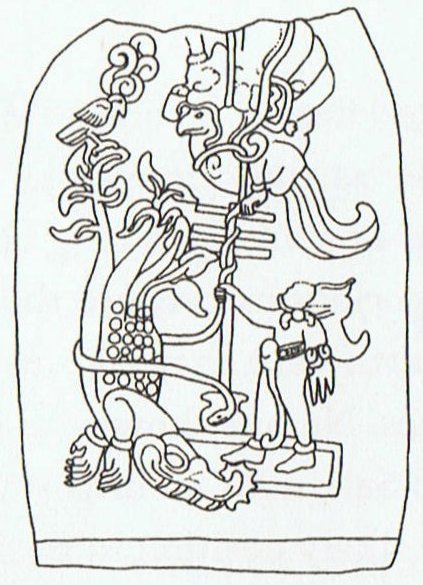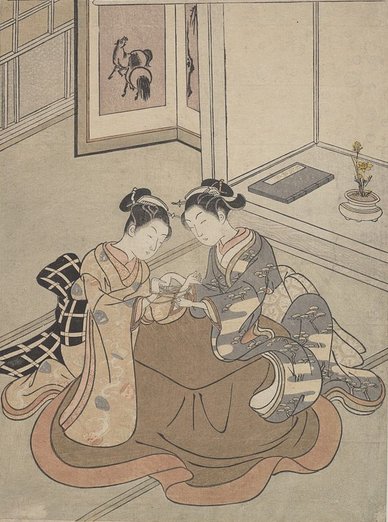There was a kind of rope lying in the path of the King. And he would die if he just walked on. This Rope could perhaps have referred to the thong leading up from Spica to Alcor (80 Ursae Majoris). ... Proclus informs us that the fox star nibbles continuously at the thong of the yoke which holds together heaven and earth; German folklore adds that when the fox succeeds, the world will come to its end. This fox star is no other than Alcor, the small star g near zeta Ursae Majoris (in India Arundati, the common wife of the Seven Rishis, alpha-eta Ursae ... Porrima was 11 right ascension days before Spica - like how Deneb Kaitos was 11 right ascension days before the Knee (Ksora, δ Cassiopeiae):
Spica was associated with the Crocodile and rakau means Tree. In the Mayan illustration below we can see how the nose of the crocodile was trampled down (rei):
Rei. 1. To tread, to trample on: rei kiraro ki te va'e. 2. (Used figuratively) away with you! ka-rei kiraro koe, e mageo ê, go away, you disgusting man. 3. To shed tears: he rei i te mata vai. 4. Crescent-shaped breast ornament, necklace; reimiro, wooden, crescent-shaped breast ornament; rei matapuku, necklace made of coral or of mother-of-pearl; rei pipipipi, necklace made of shells; rei pureva, necklace made of stones. 5. Clavicle. Îka reirei, vanquished enemy, who is kicked (rei). Vanaga. T. 1. Neck. 2. Figure-head. Rei mua = Figure-head in the bow. Rei muri = Figure-head in the stern. Henry. Mother of pearl; rei kauaha, fin. Mgv.: rei, whale's tooth. Mq.: éi, id. This is probably associable with the general Polynesian rei, which means the tooth of the cachalot, an object held in such esteem that in Viti one tooth (tambua) was the ransom of a man's life, the ransom of a soul on the spirit path that led through the perils of Na Kauvandra to the last abode in Mbulotu. The word is undoubtedly descriptive, generic as to some character which Polynesian perception sees shared by whale ivory and nacre. Rei kauaha is not this rei; in the Maori whakarei designates the carved work at bow and stern of the canoe and Tahiti has the same use but without particularizing the carving: assuming a sense descriptive of something which projects in a relatively thin and flat form from the main body, and this describes these canoe ornaments, it will be seen that it might be applied to the fins of fishes, which in these waters are frequently ornamental in hue and shape. The latter sense is confined to the Tongafiti migration. Reirei, to trample down, to knead, to pound. Pau.: Rei-hopehopega, nape. Churchill. A pair of women were weaving a Cat's Cradle (kaikai) with the Tail of the Horse (Ma Wei) in the background on one side and with the other side (around 120º away) occupied by the head down Crocodile with her back oriented towards a Tree - converted to a wooden vertical beem (pillar) it appears:
... Isis, overwhelmed with grief, sheared off her locks, donned mourning, and searched in vain, up and down the Nile; but the coffin had been carried by the tide to the coast of Phoenicia, where, at Byblos, it was cast ashore. A tamarisk immediately grew up around it, enclosing the precious object in its trunk, and the aroma of this tree then was so glorious that the local king, and queen, Melqart and Astarte - who were, of course, a divine king and queen themselves, the local representatives, in fact, of the common mythology of Damuzi and Inanna, Tammuz and Ishtar, Adonis and Aphrodite, Osiris and Isis - discovering and admiring its beauty, had the tree felled and fashioned into a pillar of their palace ... |
|||||||||||||||||||||||||||||||||||||||||||||||||||||||||||||||||||||||||||||||||||||||||||||||||




